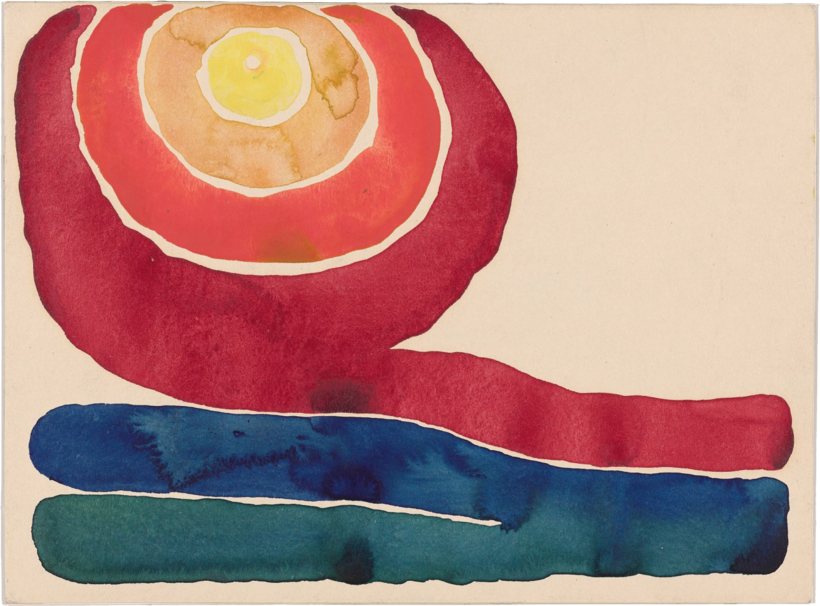In 1916, Georgia O’Keeffe, by day an art teacher in Canyon, Texas, could often be found by night crawling around on the floor of her top-story rented room. With cramps in her feet, yet feeling “downright reckless,” she fought to capture a jag of lightning or a rising moon on a foot-high stack of cheap paper until she “got it right.” Working rapidly—first in charcoal (sometimes wearing the skin off her fingers from the rubbing) and eventually in pastels, graphite, or watercolors—was a way of seeing things over time, as if in a series of photographs, a practice she’d learned at college.

The serial works that O’Keeffe made so passionately throughout her life are the subject of “Georgia O’Keeffe: To See Takes Time,” an exhibition opening tomorrow at the Museum of Modern Art, in New York City. (MoMA’s last O’Keeffe exhibition—its very first devoted solely to the work of a female artist—was in 1946.) In contrast to O’Keeffe’s self-described “frenzied” state of mind, the curators have approached these works, rarely seen in full, in a spirit of “investigation.” They illustrate her exacting artistic process from documentation to abstraction.
This is O’Keeffe in another key, not the one reductively categorized as an artistic jezebel who painted overscaled flowers with Freudian subtexts. When Alfred Stieglitz—the famed photographer, owner of New York’s renowned 291 gallery, and O’Keeffe’s eventual husband—first saw these drawings, he said, “Finally a woman on paper.” He recognized her talent (though it was his promotion of her as a sexually liberated woman that launched the branding that came to define her). A rare series of nude self-portraits are also on display, as well as related paintings that punctuate the feelings she had while making the works—as if “drunk” with sensation.

Though O’Keeffe is more widely known for her painting, it was in the drawings made in rapid succession that her experiments with composition, abstraction, scale, and color took root. Whether channeling the moon, the rush of a train, or the ocean surging and swelling, “the [drawings] ebb and flow and stutter and recur,” writes MoMA curator Samantha Friedman in the exhibition catalogue. The lush colors and undulating lines in the “Evening Star” series of watercolors are particularly expressive, as O’Keeffe worked rapidly to corral the shifts of a sunset.
Her entry into Stieglitz’s circle of carefully cultivated artists (Paul Strand, John Marin, Marsden Hartley) was influential, as was her exposure to works by Winslow Homer and Claude Monet. From the ground and later from an airplane, from the Adirondacks to Maine to the vast reaches of New Mexico, O’Keeffe was ravished by the exotic displays of nature as they, too, had been.

Hardly a year goes by without an exhibition devoted to O’Keeffe’s work somewhere in the world. Like Frida Kahlo, she is catnip for curators, who have explored every aspect of her life, even down to the very clothes she wore. At MoMA, we return instead to the nuts and bolts of her practice. “To see takes time,” O’Keeffe wrote, “like to have a friend takes time.” —Patricia Zohn
“Georgia O’Keeffe: To See Takes Time” will be on at the Museum of Modern Art beginning April 9
Patricia Zohn has contributed to numerous publications, including Wallpaper, ArtNet, The Huffington Post, The New York Times, and the Los Angeles Times


 Discover
Discover